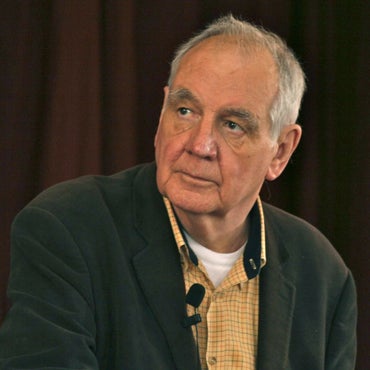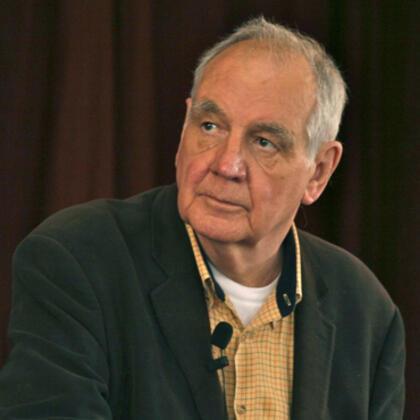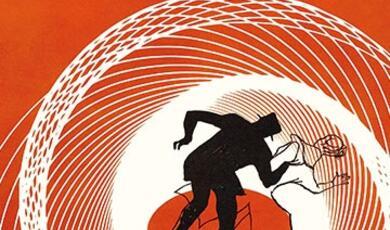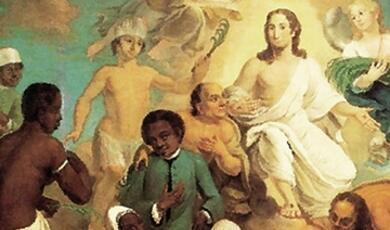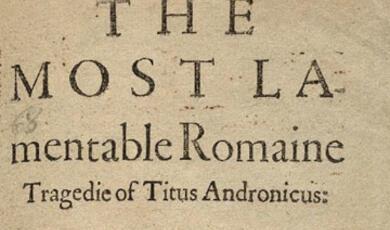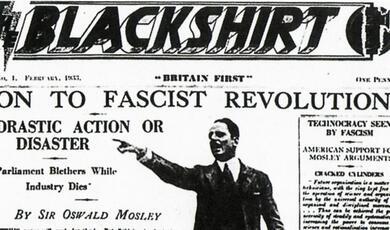Dickens: The Last Decade
Share
- Details
- Text
- Audio
- Downloads
- Extra Reading
In the last ten years of his life Charles Dickens related to his adoring public in a number of different ways; as novelist, as journalist, as public speaker, and in public readings of his own work.
This lecture explores the contrast between the public image and the private life, considering what his writings reveal to us about his deepest preoccupations, both as man and as artist, during this period.
Download Text
Dickens: The Last Decade
Professor Michael Slater MBE
14 April 2021
On September 3rd 1860 Dickens, a few months after his 48th birthday, made a great bonfire in the field behind his home, Gad’s Hill Place near Rochester in Kent, of what he described as ‘the accumulated letters and papers of twenty years’. He was prompted to do so by what he saw as the misuse of famous people’s private correspondence after their death. Three of his children carried out ‘basket after basket’ of correspondence to feed the flames and he resisted his daughter Kate’s pleas to save even a few letters from the fire, telling her that ‘We should always remember that letters are ephemeral’. Describing the event in a letter to W.H.Wills, sub-editor of his weekly journal All The Year Round, Dickens made a characteristic allusion to his beloved Arabian Nights. The bonfire, he wrote, ‘sent up a smoke like the Genie when he got out of the casket on the seashore and as it was an exquisite day when I began, and rained very heavily when I finished, I suspect my correspondence of having overcast the face of the Heavens’. Whatever effect it might have had upon the Kentish weather that day, this bonfire, the first of several such, can certainly be seen as symbolic of the new epoch in Dickens’s life that had begun two years earlier.
Following the tumultuous events in both his personal and professional life that took place during 1858- 59, Dickens’s last eleven years were notable for new departures in almost every respect. He no longer lived in London, that great and dark nourisher of his supreme literary genius, but at Gad’s Hill House, in the Kentish countryside of his happy early childhood. Nor did he any longer live with Catherine, his wife of more than twenty years, who had borne him ten children, supported him in his energetic social life - in France and Italy as well as in London - and who had been the clearly much-appreciated hostess of many a grand dinner-party. She had also been at his side during his triumphant, but exceedingly gruelling, American tour of 1842. Their separation sixteen years later had been instituted by Dickens alone and he never saw her again. Their eldest son, 21-year-old Charley, then working for Barings Bank, went to live with his mother while their two daughters and five younger sons continued living with their father. Dickens’s household was now managed jointly by his 31-year-old sister-in-law, Georgina Hogarth, who chose to stay with him in defiance of her family, and by his devoted elder daughter, Mamie, aged 20, who never married. His younger daughter, Katey, a talented artist, married in 1860 - mainly, it seems, to get away from home though she remained very close to her father. As to Dickens’s younger sons, trying to get them settled in life, in the armed forces or in the colonies, was to prove - with one exception - a major concern during his last decade. The exception was his sixth son Henry Fielding Dickens who went to Cambridge and subsequently had a successful career in the law, eventually achieving a knighthood.
Dickens, then, had abundant family responsibilities but he also had a second private life, a secret one involving what scandalmongering old Lady Tippins in Our Mutual Friend, his last completed novel, slyly refers to as ‘Two establishments’. Publicly, he was Mr Dickens of Gad’s Hill, the hugely famous - and hugely popular writer, the joyous celebrator of hearth and home, and a doughty crusader for greater social justice. Secretly, he was ‘Mr Tringham’, the lover of a young actress called Ellen Ternan and a sort of fairy godfather to her family as a whole. This family consisted of Ellen’s widowed mother, herself an actress, and her two older sisters, Fanny and Maria. Over the previous decade he had written a series of masterpieces, from Dombey and Son to Little Dorrit, which all have among their leading themes the dangers, frustrations and humiliations experienced by women in the world of mid-Victorian England. With A Tale of Two Cities he inaugurates an equally great new series. Now, however, they are focused on male protagonists each of whom nourishes an intense passion for a woman who, for one reason or another, he can never hope to possess. The first two novels in this series, A Tale of Two Cities and Great Expectations, were initially serialised in his new weekly journal All The Year Round. This publication itself was also a new departure, being a rather different animal from its immediate predecessor, Household Words. More space and prominence were given to the serialisation of original fiction, for example. Among contributing writers was Wilkie Collins with whom Dickens developed a close personal friendship during the last ten years of his life, enjoying trips together en garcon to enjoy the ‘festive diableries’ of Paris. Both Collins’s The Woman in White and his The Moonstone first appeared in weekly instalments in the new journal. Another difference from Household Words was that the articles Dickens himself wrote for All The Year Round were not just miscellaneous in nature like those he had contributed to Household Words. In All The Year Round they formed two successive series, both being written in the first person and published under the general titles, ‘The Uncommercial Traveller’ and ‘New Uncommercial Samples’. In them the reader was often encouraged to think that Dickens was writing autobiographically. This contributed in no small measure to the deepening of that special relationship between him and his readers which he described as ‘personally affectionate and like no other man’s’. It was a relationship that would reach its highest point during the last ten years of his life.
One thing that strengthened it tremendously was Dickens’s embarking, in 1858, on a new career as a public reader of his own work. This was a hugely demanding - and a hugely successful - enterprise that brought him face to face with tens of thousands of his devoted readers, both throughout the United Kingdom and in the north-eastern United States. At the same time, he continued to accept many of the invitations that regularly poured in on him asking him to speak at fund-raising charity dinners. Nearly half of all such speeches were, in fact, made during the last twelve years of his life. They included a splendid one given at an anniversary dinner of the Newspaper Press Fund in 1865 in which he recalled his youthful days as a Parliamentary reporter:
“I have worn my knees by writing on them on the old back row of the old back row of the old House of Commons; and I have worn my feet by standing to write in a preposterous pen in the old House of Lords where we used to be huddled together like so many sheep kept in waiting, say, until the woolsack might want re-stuffing.”
With regard to his career as a novelist, I noted many years ago, in my book Dickens and Women, that i less than one-third of all the named characters n his first six novels were female while in the middle five books, from Dombey and Son to Little Dorrit, this figure rose to just under half. In the four novels of his last eleven years, however - A Tale of Two Cities, Great Expectations, Our Mutual Friend and the unfinished Mystery of Edwin Drood - the proportion of women characters drops again to just over one third. Also, each one of these last four novels features a leading male character (in two cases the actual hero of the book) who falls passionately in love with a woman whom, for one reason or another, he cannot have. (That one of these novels Great Expectations should end with an abrupt, and - arguably - highly implausible, reversal of this situation is owing, as is well known, to Dickens’s last-minute acceptance of the market-driven advice of his revered friend, and hugely successful fellow-novelist, Edward Bulwer Lytton, author of The Last Days of Pompeii and a shelf-full of other titles). We might also include here, along with the four novels, a haunting first-person narrative, ‘George Silverman’s Explanation’, for which The Atlantic Monthly paid Dickens the then staggering sum of £1,000 in 1867. In this story Silverman’s love for the beautiful young upper-class girl he is tutoring is even more painful than hopeless love would be in that he comes gradually to realise that his love is reciprocated. He is prevented from acting on this, however, by a paralysing fear of being condemned by her haughty mother as ‘a mercenary wretch’. This was a fear which stemmed from his having been so called by his own harridan of a mother in his traumatising childhood in the cellar of a Preston slum.
In the first of Dickens’s last four novels, A Tale of Two Cities (serialised in All The Year Round 30 April – 26 November 1859) he, as has been much noted, actually models the physical appearance of the heroine, Lucie Manette, at least in part, on that of Ellen Ternan. Here is his description of Lucie as seen by an older male character:
“A short, slight, pretty figure, a quantity of golden hair, a pair of blue eyes that met his own with an enquiring look, and a forehead with a singular capacity (remembering how young and smooth it was), of lifting and knitting itself into an expression that was not quite one of perplexity, or wonder, or alarm, or merely of a bright fixed attention, though it included all the four expressions.”
Ellen had had a minor role in some fund-raising-for- charity theatricals that Dickens had organised the previous year. The first name of the character she played was Lucy, hence, no doubt, the name of the heroine of A Tale of Two Cities. Her mother, a leading actress of the day, and one of her older sisters, Maria, had played major roles in the same theatrical enterprise. The play, The Frozen Deep, written jointly by Dickens and Wilkie Collins, is what we should now call an all-out melodrama. The hero, Richard Wardour, played by Dickens, sacrifices his own life to save that of his younger friend and fellow Arctic explorer Frank Aldersley, played by Collins. He does so because he knows that his beloved Clara (played by Maria) cannot return his love because she loves Frank. In his preface to A Tale of Two Cities Dickens notes that the story had had ‘complete possession’ of him. He writes, ‘I have so far verified what is done and suffered in these pages, as that I have certainly done and suffered it all myself’. This is one of the most intensely personal statements to be found in any of Dickens’s prefaces and may perhaps have emanated from some fantasy he nourished about sacrificing his love for Ellen by promoting another, younger, lover in his place. In the novel the brilliantly gifted but dissolute hero, Sidney Carton, who - passionately but hopelessly - loves Lucy Manette, sacrifices his life to save that of the man she loves, Charles Darnay. Charles Dickens is here, consciously or unconsciously, playing the initials game as he had done once before in reversing his initials when naming David Copperfield. In that case he claimed that he had not realised what he had done until it was pointed out to him by his friend and later biographer, John Forster.
The hero of his next novel, Pip in Great Expectations, is, from his childhood, smitten with intense love for Estella the beautiful ward of blighted Miss Havisham. Her weird upbringing, trained to break men’s hearts, has rendered her incapable of loving. Pip loves her, he tells us, ‘against reason, against promise, against peace, against hope, against happiness, against all discouragement that could be’. As I have already noted, Dickens’s intention was that the novel should end with Pip still hopelessly yearning for her. In the last two novels, Our Mutual Friend and the unfinished Mystery of Edwin Drood, the hopeless-lover figure is no longer the actual hero, however. In Our Mutual Friend, it is a powerfully imagined secondary character, the fiercely self-repressed schoolmaster Bradley Headstone who is driven to attempt the murder of his favoured rival. In The Mystery of Edwin Drood Edwin’s uncle, the opium-addicted cathedral choirmaster John Jasper, loves his nephew’s fiancée with an overwhelming passion, however, shrinks from him in terror.
Of course, I am not suggesting a crude parallel between life and fiction here. It seems pretty clear from all the evidence gathered and sifted by scholars during the past half-century that Dickens’s passion for Ellen did not go forever unrequited. He and she would seem to have become lovers in May 1858, not long after Dickens’s legal separation from Catherine (which, he claimed, was by mutual agreement). Such evidence as there is suggests that four years later, Ellen bore Dickens a child who was born in France - most probably in the metropolitan anonymity of Paris. This evidence also suggests that the child lived only for a short time. This was reported later by Dickens’s younger daughter Katey to her close friend Gladys Storey who published it in her 1939 bombshell of a book Dickens and Daughter which appeared ten years after Katey’s death. Documentary proof of Katey’s statement is unlikely ever to be discovered if the birth did indeed take place in Paris since all municipal records were destroyed during the Commune of 1870. What I am concerned to suggest here is that Dickens’s (characteristically intense) emotional experience during the earlier stages of his passion for Ellen, and before they became lovers, fed into his creation both of the character of Sidney Carton, the self-sacrificing hero of A Tale of Two Cities, and that of Pip, the hero-narrator of Great Expectations. The concept of this figure undergoes a sinister development in the last two novels of Dickens’s final decade: two leading male characters, both outwardly highly respectable, are driven to murder as a result of their burning but unrequited passion for a younger woman.
As regards Dickens’s journalism, I have already mentioned that the reader of the ‘Uncommercial Traveller’ essays was encouraged to read the Traveller’s biographical disclosures as straight autobiography on Dickens’s part. His contributions to Household Words (collected in volume form in 1858 under the uninspiring title of Reprinted Pieces) had been published in the journal without any by-line indicating that they were all from the same pen. They were mainly of an investigative-journalistic or socio-political and satirical nature. Only one or two of them contain what purport to be (and, in one case at least, certainly are) personal reminiscences of Dickens’s own early years. It was not until after he had fallen in love with Ellen in the summer of 1857 that certain of his contributions, written jointly with his younger friend and fellow-novelist Wilkie Collins, became avowedly autobiographical. These were a series of travel-pieces, published under the title ‘The Lazy Tour of Two Idle Apprentices’. They give a lightly fictionalised account of the two writers’ tour in Cumberland, ending up at Doncaster where, as it happened, Ellen and her mother were engaged for Races Week by the local theatre. This had, in fact, been the private raison d’etre for the whole expedition and in the last instalment of the series Dickens, who took Ellen and her mother to see the St. Leger run, goes into injudicious raptures about the golden-haired wearer of a pair of ‘little lilac gloves’ and ‘a winning little bonnet’ whom he saw at the course.
The two series of articles that Dickens wrote for his new weekly journal All The Year Round and published under the ‘Uncommercial Traveller’ were immediately identifiable as being from his pen in a way that his miscellaneous contributions to Household Words had generally not been. These ‘Traveller’ articles also mark something of a step-change in Dickens’s relationship with his public. Most notably, he sets about constructing in them a comfortably middle-class version of his childhood in contrast to his actual childhood dominated as it had been by his father’s financial fecklessness and his chequered schooling. The Uncommercial writes of having had a boarding-school education, for example, with fond parents sending him hampers of goodies to share with his chums. The sadistic nursemaid described in another article as having terrified the Uncommercial in his infancy with tales of murder and cannibalism would seem likewise to have been a fictitious creation.
If the ‘Uncommercial Traveller’ articles helped to strengthen Dickens’s close relationship with his readers, how much more so did his new career of public reader of his own works. He embarked on this career in 1858, and it featured very largely in his life during his last decade. It brought him face to face with his adoring readers throughout most of the British Isles as well as in the north-eastern United States, which he toured in the winter of 1867/68 with New Yorkers famously queuing all night in freezing conditions to get tickets. The Leeds Mercury commented in 1869: ‘Not only in this country, but in America, he has strengthened the relations which exist between himself and his readers’ by creating ‘fresh bonds of sympathy’ with them. In the same year a Dublin reporter wrote, ‘His readings were not looked on as a performance but as a friendly meeting longed for by people to whom he had been kind’. He also created an intoxicating new experience for himself, surpassing even that which he had enjoyed in his thirties as a brilliantly talented amateur actor. At that time, he had written, ‘There’s nothing in the world equal to seeing the house rise at you, one sea of delightful faces, one hurrah of applause!’
The obvious choice for the first of his stories to adapt for public reading purposes was that perennial favourite A Christmas Carol, probably the best-loved of all his writings, and this remained the reading that he most frequently performed. To complete the evening’s programme, he most often paired the Carol reading with that of the hilarious trial scene from Pickwick Papers in which the rascally lawyers Dodson and Fogg persuade innocent Mr Pickwick’s widowed landlady to bring an action against him for breach of promise of marriage. Altogether, during the last twelve years of his life, Dickens built up a repertoire of 16 readings derived from the novels and from some of the stories written specially for the hugely popular Christmas numbers of both his weekly journals. A particular favourite with his audiences, besides the Carol and the Pickwick trial scene, was a longer reading, in six chapters, derived from David Copperfield. This skilfully combines the comedy of the impecunious but ever-optimistic Micawbers, and that of David and Dora’s chaotic housekeeping, with the drama and pathos of Little Emily’s seduction by Steerforth, David’s idolised friend with feet of clay. This reading culminates in the great storm scene of chapter 55 (a chapter that Tolstoy considered to be the finest thing in the whole of world literature) In which there perish both Steerforth and Ham Peggotty, the man whose happiness Steerforth has destroyed and who now loses his life in a desperate attempt to save that of his betrayer.
Dickens’s ‘official’ private persona was, as I have indicated earlier, that of the ‘Squire of Gad’s Hill’, the country house near Rochester that he had admired as a child on walks with his father. He also valued it for its literary associations as it is the setting for one of Shakespeare’s greatest comic scenes, Falstaff’s attempted robbery of the Canterbury pilgrims in Henry IV Part One. Once he became the actual owner of this house, Dickens commissioned an illuminated scroll commemorating its association with Shakespeare and had it hung, suitably framed, in the entrance hall. It can be seen today in the Charles Dickens Museum. Dickens had bought the house in 1856, two years before the great public scandal of his separation from his wife. After Catherine’s exile from the family home in the spring of 1858 Dickens continued to live there for the last 12 years of his life, still very much as a family man. He took the greatest pleasure in making continual ‘improvements’ to the property, improvements culminating in the addition of a conservatory in which he delighted to hang Chinese lanterns.
At Gad’s Hill Dickens entertained many friends as houseguests with festive dinners, usually followed by parlour games (charades being a special favourite), and took strenuous long walks in the neighbourhood. He was always accompanied by his beloved dogs – notably by a devoted St Bernard named Linda and a splendid mastiff named Turk, the latter seen here with him in a famous photograph.]. Georgina was one of the very few of his walking companions who could keep pace with Dickens - it was noted that, whenever he came to rising ground, he increased his pace. Gad’s Hill Place was the setting for the great Dickens family Christmas festivities involving charades and other parlour games. In one year, 1866, the seasonal festivities extended beyond the house itself and its inmates. In the field behind it Dickens organised some elaborate Boxing Day sports with himself acting as judge, referee and presenter of cash prizes (provided by himself). A great crowd, between two and three thousand people, showed up yet, as a result of what one of his houseguests described as Dickens’s ‘magical kind of influence’, there was no trouble or disturbance of any kind at any point during the day. Earlier in the year a much wider public had been introduced to Dickens at home at Gad’s Hill with Georgina, his daughters and visiting friends by a series of carefully posed photographs taken by a professional photographer Robert Hindry Mason. One shows Dickens posed reading to his daughters, Katey (standing) and Mamie, and another shows him grouped with Katey, Mamie, Georgina, Wilkie Colllns and other guests in the front porch of Gad’s Hill.
Dickens owned a piece of land, called The Shrubbery, on the other side of the main road from Gad’s Hill House. It was here that he caused to be erected the Swiss chalet sent to him by his much-admired friend the leading French actor Charles Fechter on Christmas Eve 1864. It had arrived in the form of its 94 component parts and Dickens had to get help in erecting it from the stage carpenter at the Lyceum Theatre. A tunnel (still there) was dug under the main road so that Dickens could reach the chalet safely. It became his workplace or (to borrow a phrase from Auden) his ‘Cave of Making’. It was here that, on the morning of the day he died - 9 June 1870 - he wrote the sixth monthly number (there were intended to be twelve in all) of his last novel, The Mystery of Edwin Drood. It is Interesting to note, I think, that when Mason came to Gad’s Hill to take his photographs Dickens did not pose for any of them in front of - or standing on the veranda of - this chalet. It evidently was for him a very private space.
So much for Dickens’s ‘official’ private life during his last decade. As regards his relationship with Ellen Ternan, it was not until nearly 60 years after his death that the public began to have any knowledge of the doubly-private private life he had lived with his ‘darling girl for his last twelve years. It seems most probable that he helped the two older Ternan sisters to purchase a long lease of a four-story house in Houghton Place near London’s Mornington Crescent, a lease which was then transferred to Ellen on her 21st birthday in March 1860. She lived there with her mother until 1865 and it was during that time that she would have crossed to France to bear him that putative short-lived child I mentioned earlier.
In June 1865 Dickens’s relationship with Ellen came near to being publicly exposed when they were both involved, together with Ellen’s mother, in a terrible railway accident. All three were travelling back to London from France by the so-called ‘tidal train’ from Dover when it derailed as it was crossing a bridge over a small river at Staplehurst in Kent. Ten people died and many more were seriously wounded. Somehow or other, Dickens managed to extricate himself and his two companions from the wreckage of their carriage, of which they had been the sole occupants, and which had just missed crashing down into the river and now hung precariously over it. Remarkably, Dickens seems to have been able to get Ellen and her mother clear away from the terrible scene before the arrival of rescue workers and journalists. He then set about rendering what assistance he could (mainly, it seems, in the form of brandy) to the wounded and dying, as depicted in The Penny Illustrated Paper for 24 June. ‘No imagination’, he wrote to his close friend Thomas Mitton, ‘can conceive the ruin of the carriages, or the extraordinary weights under which people were lying, or the complications into which they were twisted up among iron and wood, and mud and water’. At some point he risked his life by climbing back into the wreckage to retrieve the manuscript of the latest - as yet unpublished - monthly number of Our Mutual Friend, which he was in the process of writing. He referred to this hazardous exploit and in a postscript to the novel when it was published in book form: ‘I can never be much nearer parting company with my readers for ever, than I was then until there shall be written against my life the two words with which I have this day closed this book: - The End.’
The following year, 1866, was Mrs Ternan’s last as a working actress. She and Ellen moved to a cottage in what was then the little market-town of Slough. The rent was paid by Dickens under the assumed name of Tringham. He himself rented another cottage a short distance away, also under the name of Tringham, and his pocket-diary for 1867 shows that he was regularly commuting between London and Slough during the first four months of the year. Slough was a temporary arrangement while Dickens and Ellen looked (a search also recorded in the diary) for a suitable permanent home for Ellen in the developing south London suburb of Peckham, now reachable by rail from Waterloo Station. Their eventual choice was a handsome villa called Windsor Lodge, but Ellen did not move there until 2 months after Dickens’s return from America. The rates were first paid by him in July 1868 under the name of ‘Frances Turnham’ – the name was later changed to ‘Charles Tringham’. Dickens’s commutes to Slough and Peckham were recorded in his diary for 1867 which, to his consternation, he lost that autumn in New York. It is now in the New York Public Library where it was first investigated and its cryptic entries were first interpreted by a distinguished and scholarly actor, the late Sir Felix Aylmer, who published his findings in a book called Dickens Incognito in 1959.
This diary also contains copies of the coded telegrams that show Dickens had been hoping for Ellen to join him in America at some point during his gruelling readings tour in the north-eastern States. This project had to be abandoned, however, once the sensational success of - and huge publicity generated by - the tour had become clear. It would have been simply impossible for Dickens’s association with Ellen to have been kept secret and this would have had very damaging consequences for both of them. As it was, the tour, involving over 70 readings in four and half months, was a colossal success. It yielded Dickens a profit of no less than £20,000 - it would have been nearly twice as much had he not insisted on converting all his dollars into gold. As on his 1842 visit to America, he was received by the President - In this case it was Lincoln’s successor Andrew Jackson, a Democrat who was embroiled in party strife and who was to escape impeachment by one Senate vote. Dickens’s gruelling tour, in harsh winter conditions, took him as far north as Portland, Maine, and as far west as Buffalo. Unsurprisingly, it had a very deleterious effect upon his health – especially as regards his feet and he blamed this on what he referred to as ‘over-walking in deep snow’.
Back in England, he settled Ellen into Windsor Lodge and was soon making plans for a six-month Farewell Reading Tour of England, Scotland and Ireland. He introduced into his repertoire a new and highly sensational Reading, that of the savage murder of Nancy by Bill Sikes in Oliver Twist. This had an electric effect upon his audiences (ladies fainting and having to be carried out ‘stiff as a board’’ were apparently not uncommon) and always left Dickens himself temporarily prostrate. After six months touring, with Sikes and Nancy regularly on the programme, he was too ill to continue, and the tour had to be abruptly terminated. He recovered enough, however, to give a series of twelve farewell readings in London in the first three months of 1870. Thereafter he was, as he told his very last audience, ‘to vanish from these garish lights for evermore’.
He began a new novel, The Mystery of Edwin Drood, to be published in12 monthly numbers instead of the traditional 20. This was perhaps a sign that he and his publishers no longer felt it prudent, given his health problems, to commit themselves to the traditional 20 monthly parts. As it was, he did die of a stroke just half-way through the serialisation of Drood, leaving his readers struggling to this day to solve the mystery as best they can. He died at Gad’s Hill on 9 June, five years to the day since the Staplehurst accident. He had been writing all day and fell ill just after sitting down to dinner with Georgina. A local legend, until recently still current in Peckham apparently, provides a more sensational death-story. According to this, Dickens died while visiting Ellen and his corpse was then ferried by her in a closed cab the 26 miles to Gad’s Hill. There Georgina, having been alerted to the macabre situation by telegraph, was able to stage a more appropriate death-scene for the nation’s best-loved author.
Dickens’s will reads in places almost like a novel. It has a sensational opening in the form of a £1,000 bequest (equivalent in today’s money to approximately £120,000) to a mysterious ‘Miss Ellen Lawless Ternan, late of Houghton Place, Ampthill Square, in the county of Middlesex.’. Six years later no-one seems to have made any connection with Dickens when a Miss Ellen Lawless Ternan married a young clergyman called George Wharton Robinson by whom she was to have two children. Dickens’s will has a heroine-figure in Georgina Hogarth, described as ‘the best and truest friend man ever had’. Catherine, though no villain, seems to somehow to be to blame for the fact that she has, since their separation, received from Dickens an annual income of £600 while, as he records, ‘all the great charges of a numerous and expensive family have devolved wholly upon myself’. His detailed instructions for a quiet, and very private, funeral did not specify any location which – perhaps intentionally - left it open for the Dean of Westminster to intervene proposing that such a ceremony could be held even in the Abbey. The family agreed and the event duly took place very early one morning, before the Abbey opened to the public, and with only the number of mourners (13) specified in the will in attendance. This novel of a will has an ironic kind of epilogue, too, in that Dickens, who had a horror of statues, explicitly stipulates in it that he should never ever be made the subject of any monument whatever. This has been cheerfully ignored by his admirers over the years - most recently, and most ironically, in his birthplace, Portsmouth. Dickens will states ‘I rest my claims to the remembrance of my countrymen solely upon my published works’. Given these words, we can, I think, feel pretty sure that the one pictorial memento of himself of which Dickens would have approved is Luke Fildes’s famous painting of his study at Gad’s Hill which was engraved for publication in the 1870 Christmas number of The Graphic under the title of ‘The Empty Chair’.
© Professor Slater, 2021
Part of:
This event was on Wed, 14 Apr 2021
Support Gresham
Gresham College has offered an outstanding education to the public free of charge for over 400 years. Today, Gresham College plays an important role in fostering a love of learning and a greater understanding of ourselves and the world around us. Your donation will help to widen our reach and to broaden our audience, allowing more people to benefit from a high-quality education from some of the brightest minds.


 Login
Login
